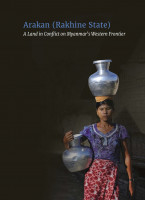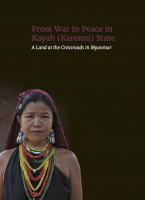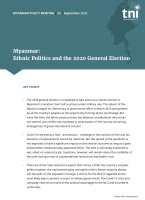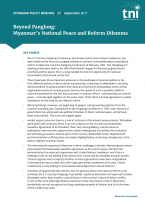The Nationwide Ceasefire Agreement in Myanmar Promoting Ethnic Peace or Strengthening State Control?
The ethnic ‘peace process’ in Myanmar is one of the most labyrinthine in the modern world. Dating back to 1989, a variety of bilateral, multilateral and unilateral initiatives have been underway. In recent years, they were linked by the aspirations of a Nationwide Ceasefire Agreement and 21st Century Panglong Conference. None of these processes have led to inclusive political dialogue or sustainable peace, and both came to a halt with the military coup on 1 February 2021. Since this time, national breakdown has further ensued, and a new cycle of armed conflicts has begun, including in both rural and urban areas that have not seen fighting and displacement in many years. Myanmar today is among the most war-torn lands in both Asia and the world.
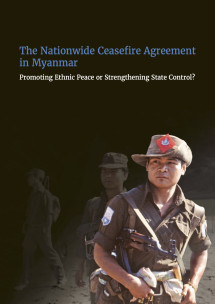
Downloads
Authors
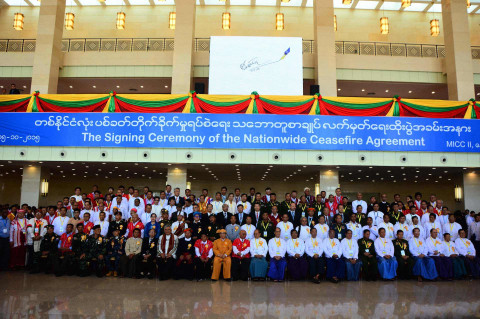
Photo credit AFP
Using the NCA as a spectrum, this new report by TNI seeks to analyse the most significant attempt to resolve ethnic conflict by negotiation since independence in 1948. Critical issues include the challenges in the negotiation of ceasefires; the failure to implement the NCA, including military violations; endeavours to overcome peace obstacles while the National League for Democracy was in government office; and analysis of how conflict parameters have changed in the fall-out from the 2021 coup.
The NCA, though, did not occur in a vacuum. Over the years, a host of other challenges came to overshadow implementation and focus, undermining peace progress on the ground. Key issues include conflict regression in Kachin, Rakhine and Shan States, people’s militia and Border Guard Forces, economic opportunism and exploitation in the ethnic borderlands, and the divergent and ineffective responses by different international actors. Such factors are integral elements in Myanmar’s conflict landscape.
Ultimately, there was no single reason why the NCA failed. The lack of inclusion, implementation, political will and political accomplishment are outstanding. Positioned at the heart of these failures is the Tatmadaw or Sit-Tat. After decades in government, the country’s military leaders sought to use the NCA as a mechanism for state control rather than a gateway to ethnic peace and reform. Myanmar was never at peace following the NCA’s 2015 inception.
Myanmar is currently in its deepest state of civil war in several decades. Repression, political violence and humanitarian emergency are sweeping every state and region. All the peoples are suffering. It is thus vital that lessons are learned from the bitter experiences of peace failure in the past in order to build a better path to reform and reconciliation in the future. Any new process to address such challenges must be equitable, inclusive, just and sincere among all parties in order to contribute to this essential task.

